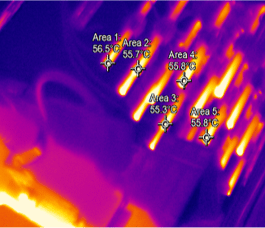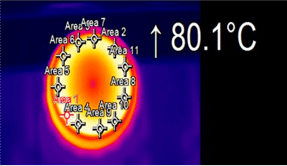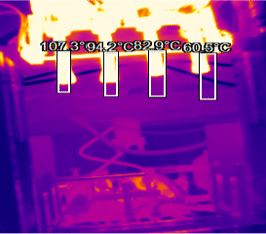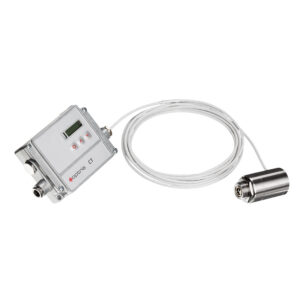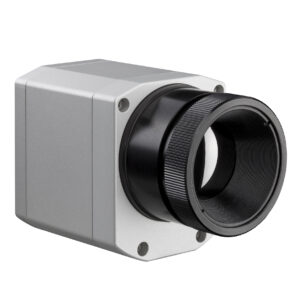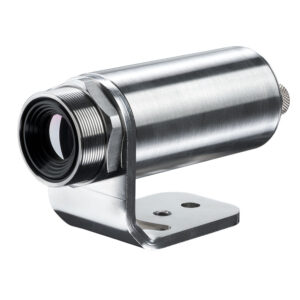Home Industries Process Industry Plastics
Temperature Measurement for Plastics
Thermoforming
To avoid local burning and crack formation, an even temperature of the material is of importance during thermoforming processes. Thermal imagers are used to retract the temperature regime of equipment. Punctual measuring pyrometers take care of the temperature control during production by monitoring defined measurement points.
Avoid a distortion of building elements with temperature measurement of the molded parts when opening the mold. Temperature overstepping or undershoot (hot spots, cold spots) can be detected. Molding temperature can be adjusted on time.
Improper lamination of cap and top of bottle affects its sealing.
Online thermal imager provides real time temp. streaming & imaging from all the defined areas
Several areas of interest are created to check proper cap lamination using thermal imaging
Accurate temperature measurement ensures homogenous wall thickness and mold cooling efficiency. Solves problem of double shot. Provides object actual temperature,
Best Pyrometers and Thermal Cameras for Plastics Production
Infrared thermometers or pyrometers are used for single point temperature measurement if the critical point is known within the process.
Infrared cameras are securely established to reveal weak points, and help to visualise thermal procedures and therefore optimise and monitor processes.
Need help to find the right solution for you?
IR Temperature measuring on moving plastic parts during a preform production
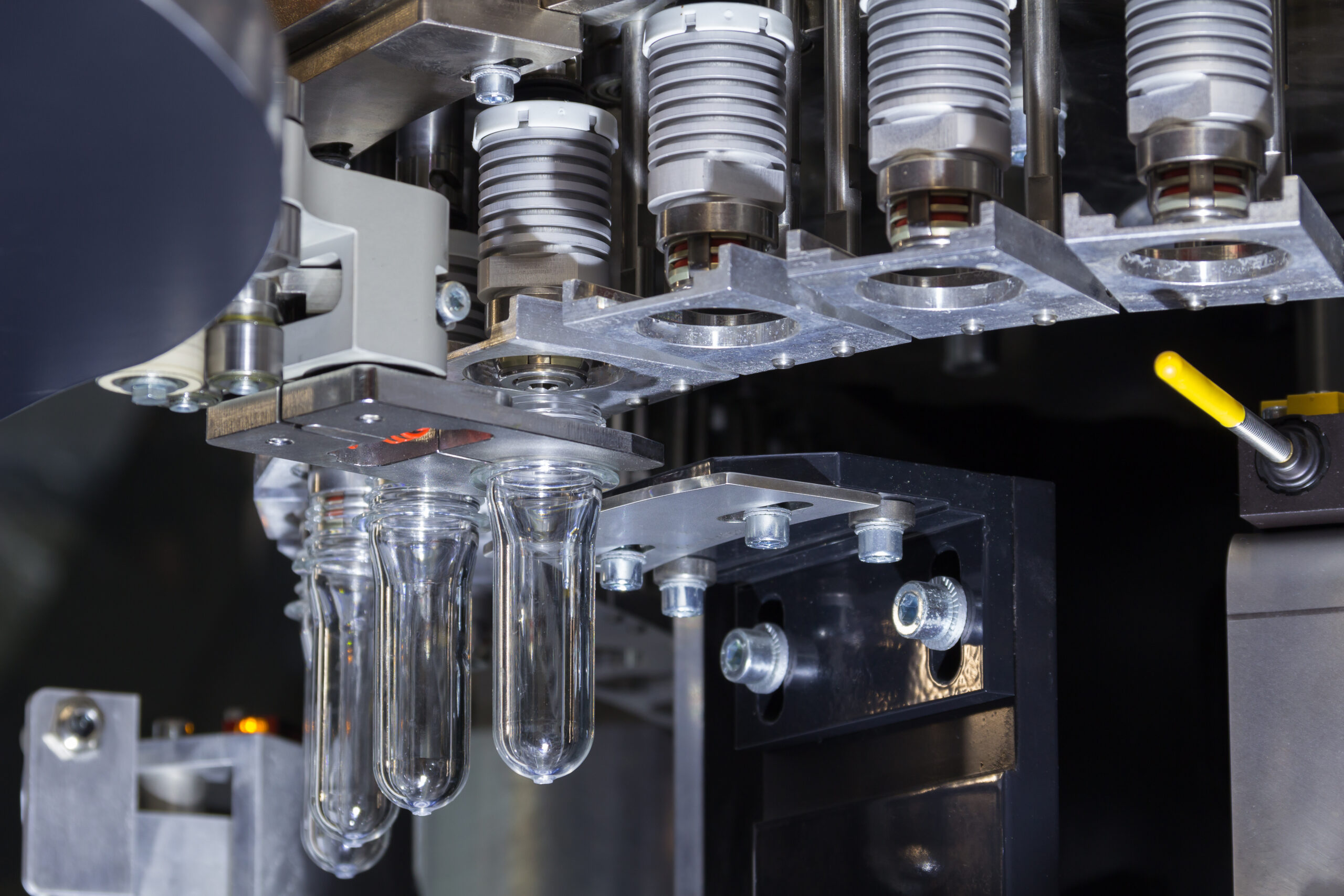
Thermal Imaging during plastic production
Thermal imaging can be particularly useful in the context of plastics for various applications, including manufacturing, quality control, and research. Here are some ways thermal imaging is utilized in the realm of plastics:
Quality Control: Thermal imaging can be used to inspect plastic products for defects such as air bubbles, voids, delamination, or inconsistencies in material density. These defects often manifest as temperature variations on the surface of the plastic during the manufacturing process. By detecting these anomalies early on, manufacturers can take corrective actions to improve product quality and consistency.
Process Monitoring: Thermal imaging cameras can monitor the temperature profiles of plastic materials as they undergo various manufacturing processes such as extrusion, injection molding, or thermoforming. This real-time monitoring helps ensure that the materials are being processed within the desired temperature ranges, which is critical for achieving the desired properties and performance of the final plastic products.
Material Characterization: Thermal imaging can aid in characterizing the thermal properties of different plastic materials, such as their thermal conductivity, heat capacity, or thermal expansion coefficients. Understanding these properties is essential for optimizing manufacturing processes and designing products that can withstand specific temperature conditions in their intended applications.
Failure Analysis: In cases where plastic components fail prematurely or exhibit unexpected behavior, thermal imaging can be used as a diagnostic tool to identify the root causes of failure. By examining temperature distributions and thermal gradients within the material, engineers can pinpoint areas of stress concentration, overheating, or thermal degradation that may have contributed to the failure.
Research and Development: Thermal imaging is also valuable for research and development efforts aimed at improving the performance, durability, and sustainability of plastics. Researchers can use thermal imaging to study the behavior of plastics under different environmental conditions, assess the effectiveness of new additives or reinforcement materials, and optimize the design of plastic components for specific applications.
Overall, thermal imaging serves as a non-destructive and non-contact method for assessing the thermal characteristics and quality of plastic materials and products throughout their lifecycle, from manufacturing to end use. Its versatility and accuracy make it an invaluable tool in the plastics industry for ensuring product quality, process efficiency, and innovation.


